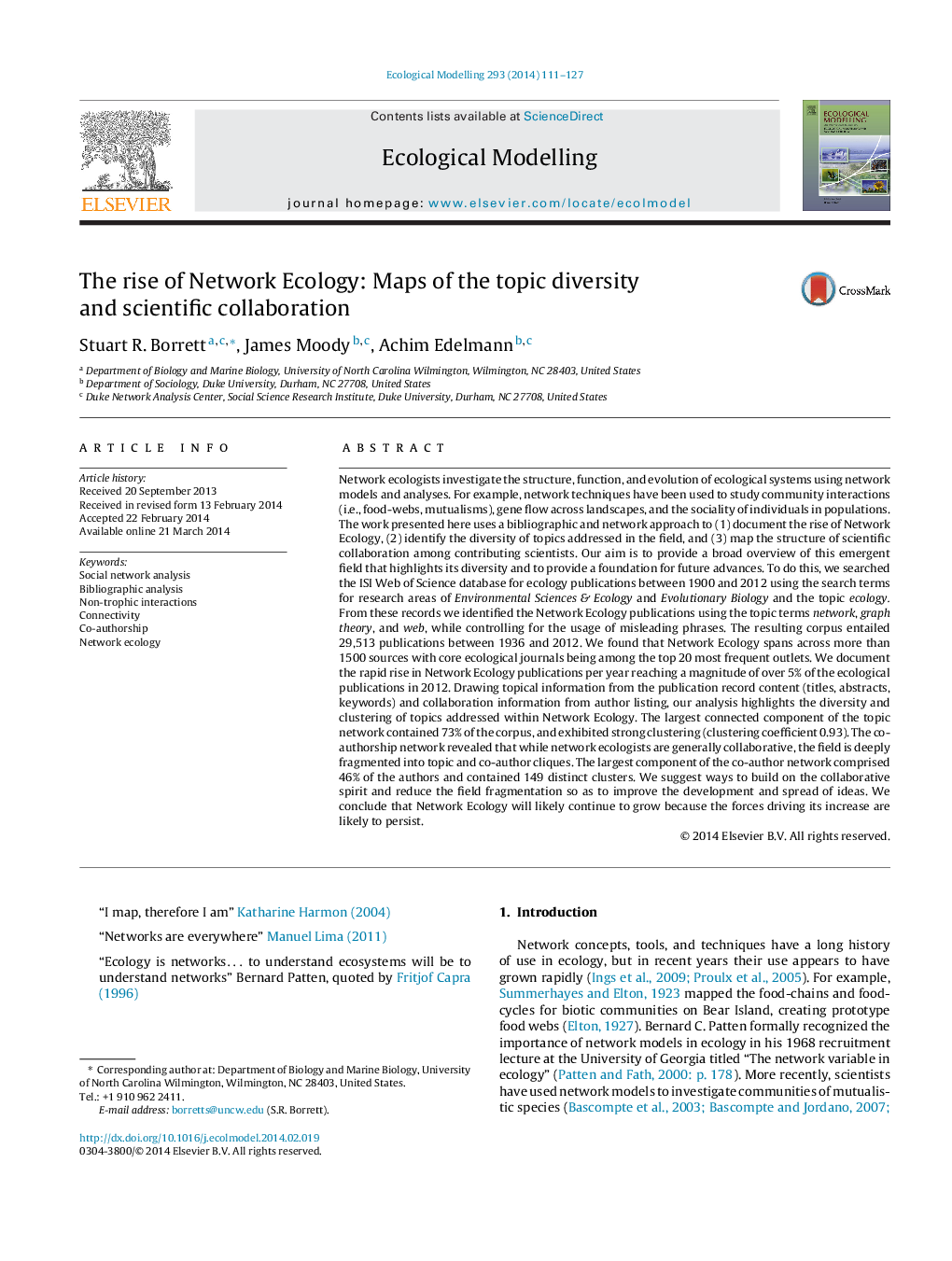| Article ID | Journal | Published Year | Pages | File Type |
|---|---|---|---|---|
| 4375797 | Ecological Modelling | 2014 | 17 Pages |
•Network ecologists study ecological systems using network models and analyses.•Network Ecology is a large and rapidly growing subfield of ecology.•Topics are diverse and range from food webs to gene flow on landscapes.•Researchers are collaborative, but are fragmented into topic and work groups.•Network Ecology will continue to thrive due to the utility of the relational model.
Network ecologists investigate the structure, function, and evolution of ecological systems using network models and analyses. For example, network techniques have been used to study community interactions (i.e., food-webs, mutualisms), gene flow across landscapes, and the sociality of individuals in populations. The work presented here uses a bibliographic and network approach to (1) document the rise of Network Ecology, (2) identify the diversity of topics addressed in the field, and (3) map the structure of scientific collaboration among contributing scientists. Our aim is to provide a broad overview of this emergent field that highlights its diversity and to provide a foundation for future advances. To do this, we searched the ISI Web of Science database for ecology publications between 1900 and 2012 using the search terms for research areas of Environmental Sciences & Ecology and Evolutionary Biology and the topic ecology. From these records we identified the Network Ecology publications using the topic terms network, graph theory, and web, while controlling for the usage of misleading phrases. The resulting corpus entailed 29,513 publications between 1936 and 2012. We found that Network Ecology spans across more than 1500 sources with core ecological journals being among the top 20 most frequent outlets. We document the rapid rise in Network Ecology publications per year reaching a magnitude of over 5% of the ecological publications in 2012. Drawing topical information from the publication record content (titles, abstracts, keywords) and collaboration information from author listing, our analysis highlights the diversity and clustering of topics addressed within Network Ecology. The largest connected component of the topic network contained 73% of the corpus, and exhibited strong clustering (clustering coefficient 0.93). The co-authorship network revealed that while network ecologists are generally collaborative, the field is deeply fragmented into topic and co-author cliques. The largest component of the co-author network comprised 46% of the authors and contained 149 distinct clusters. We suggest ways to build on the collaborative spirit and reduce the field fragmentation so as to improve the development and spread of ideas. We conclude that Network Ecology will likely continue to grow because the forces driving its increase are likely to persist.
